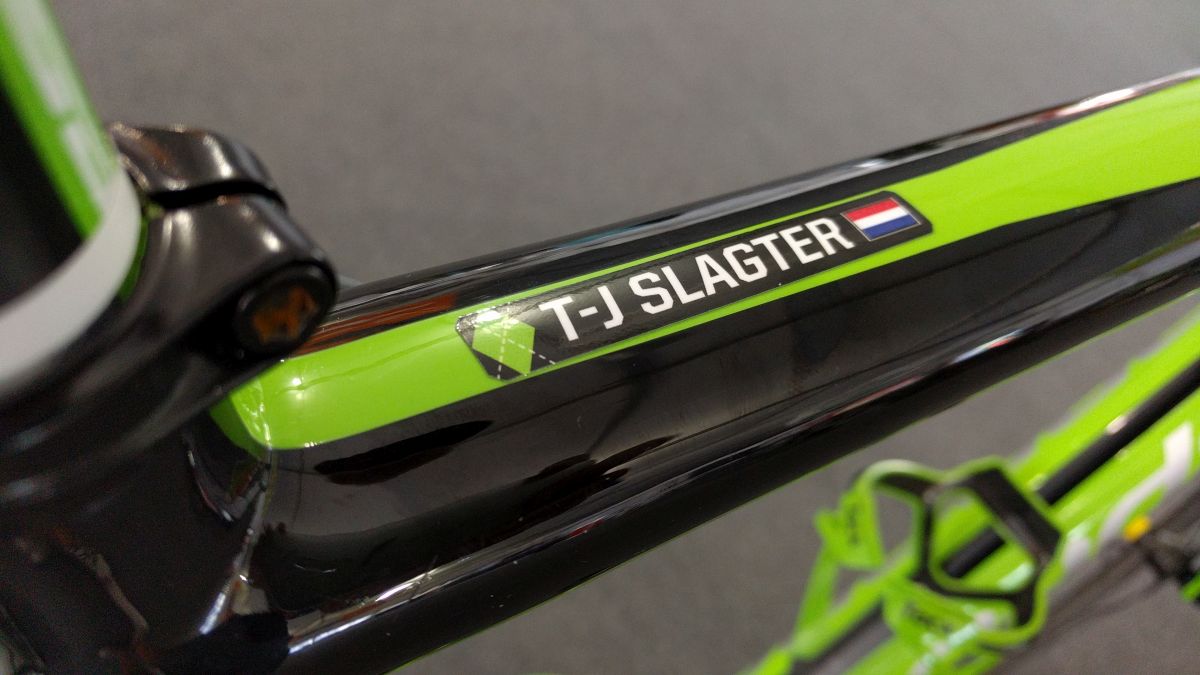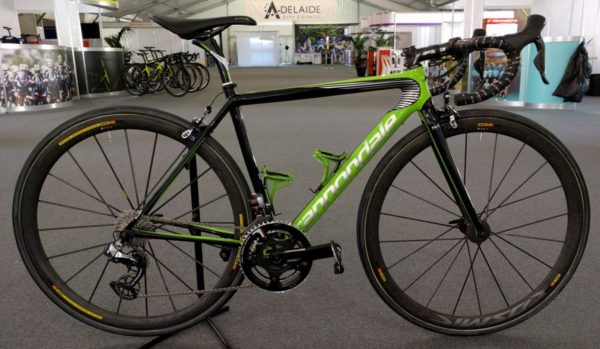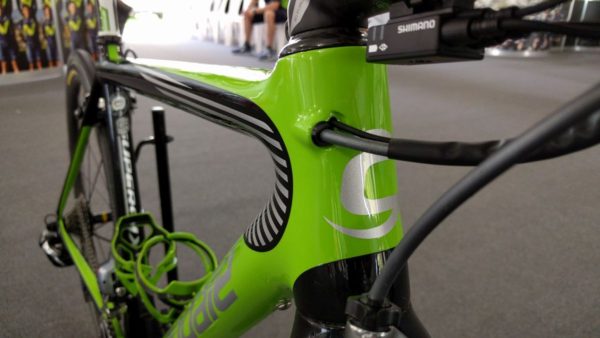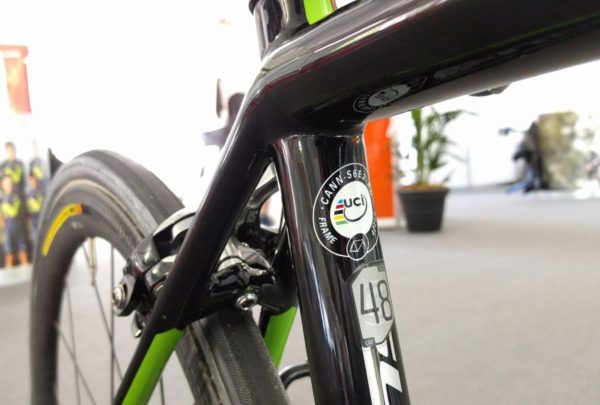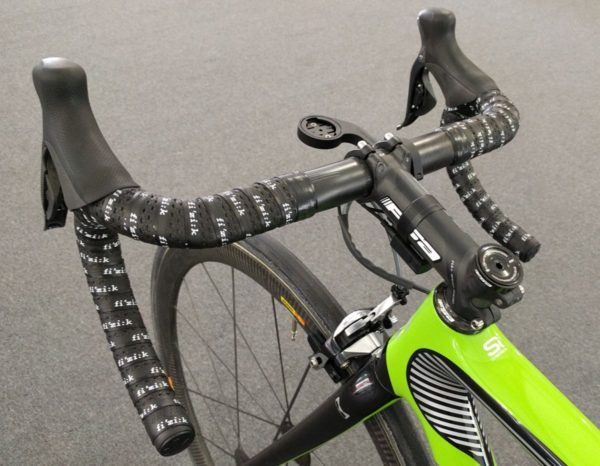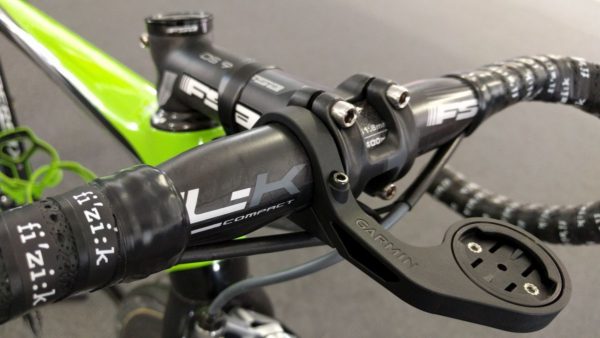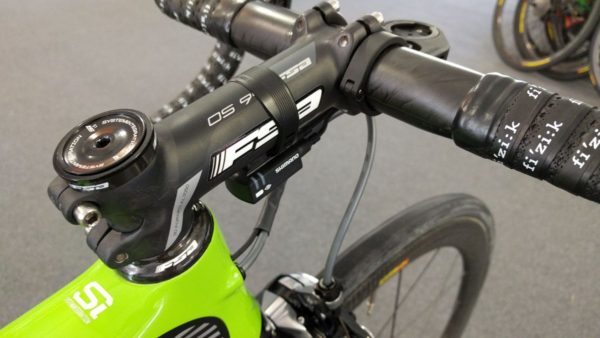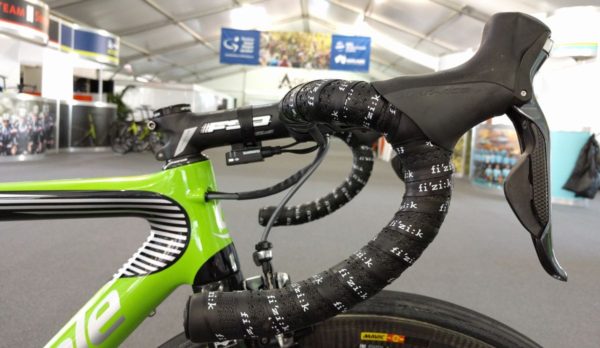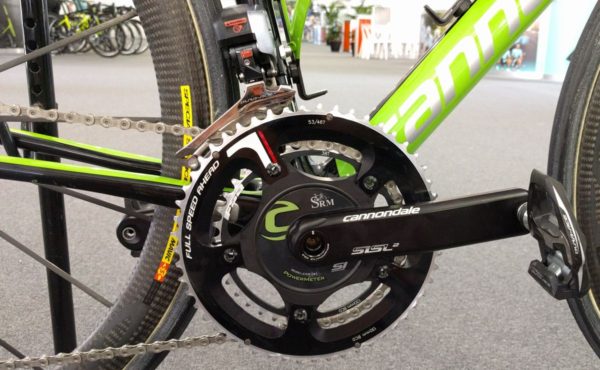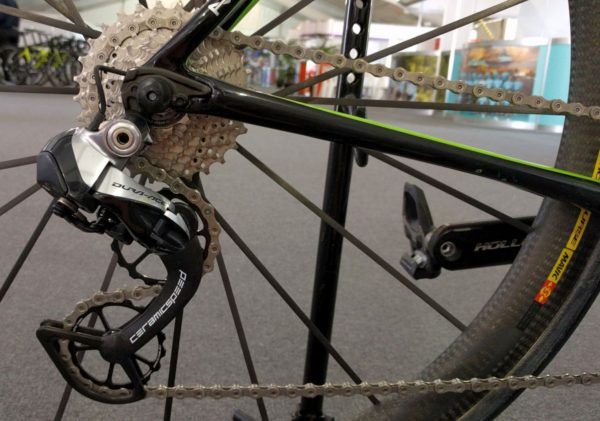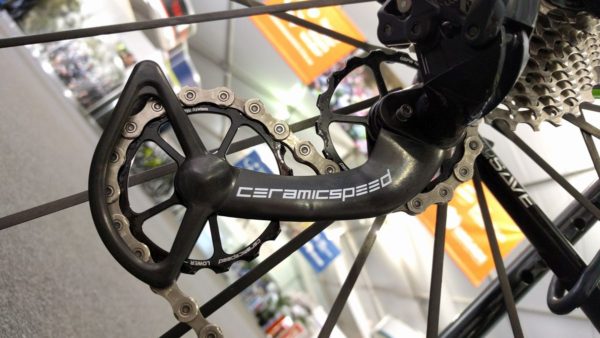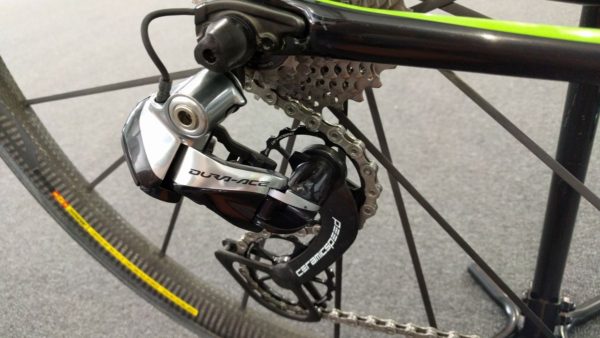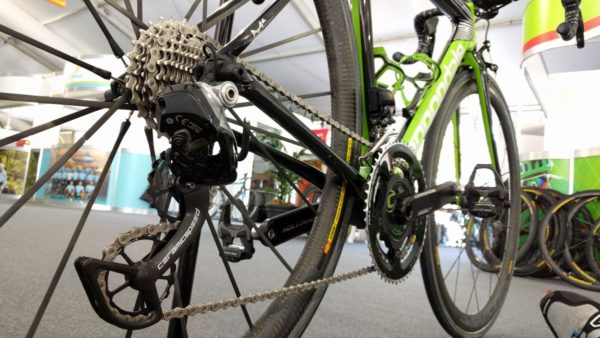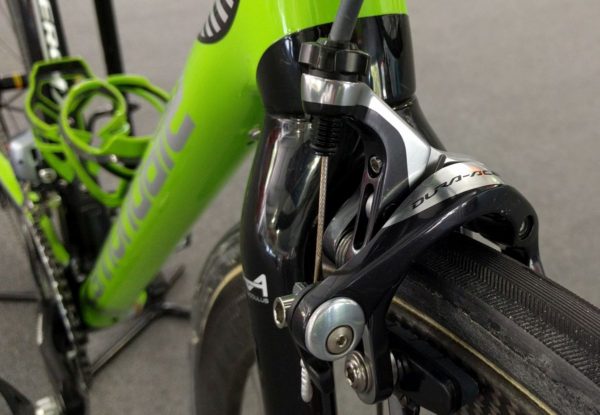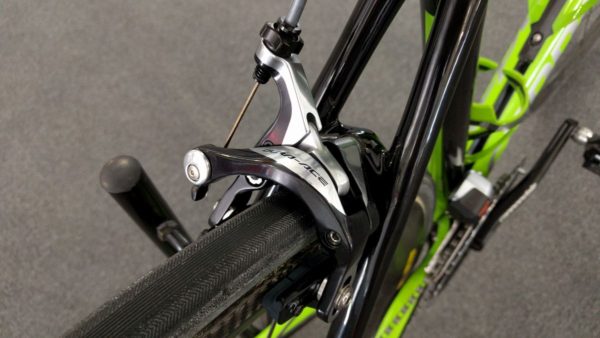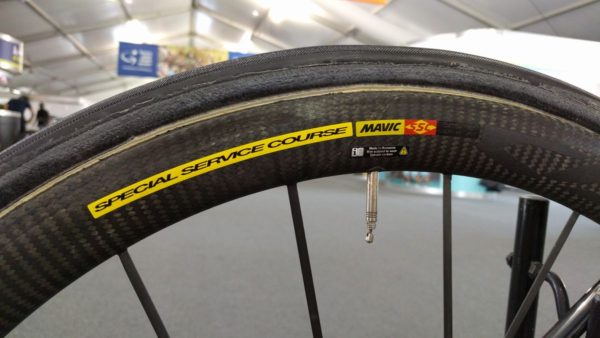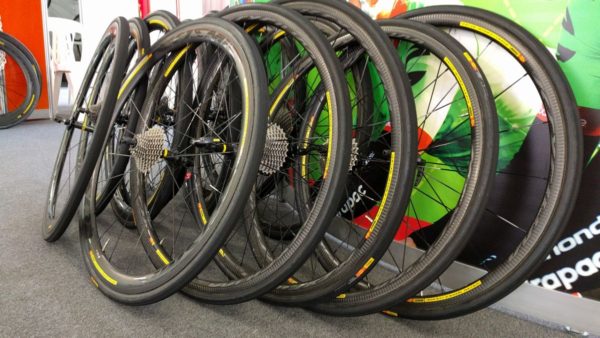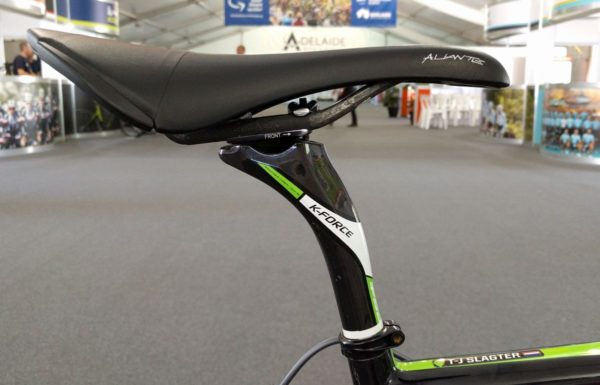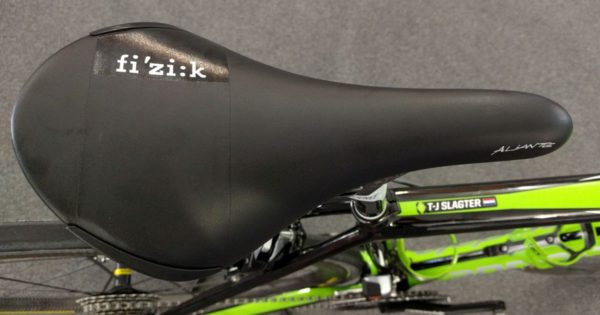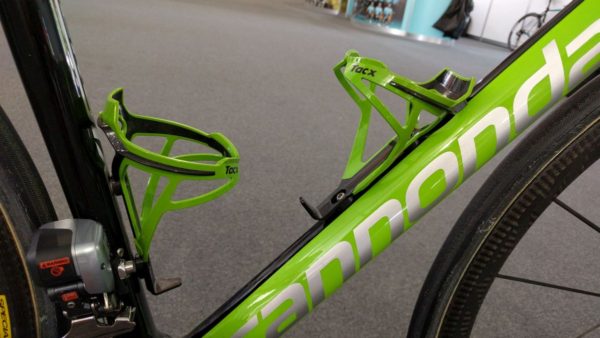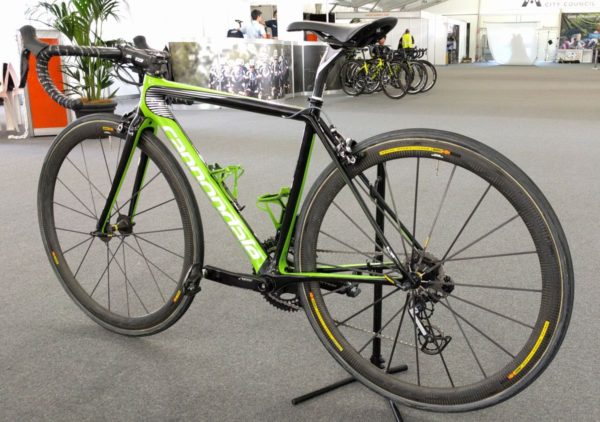For the 2017 season, the American Cannondale-Drapac team is utilizing disc brake technology on their training bikes. The team is scheduled to debut disc brakes on their race bikes at the 2017 Ruta Del Sol, but for much of the season, the team will be riding the rim brake version of the Cannondale SuperSix EVO. This rim brake variant of the team’s race bike is assigned to TJ (Tom-Jelte) Slagter. TJ has some good history at the Tour Down Under – he won the 2013 edition of the race – and has gone onto win stages at races such as Paris-Nice and the Tour of Alberta.
Click through for more of TJ’s Cannondale SuperSix EVO…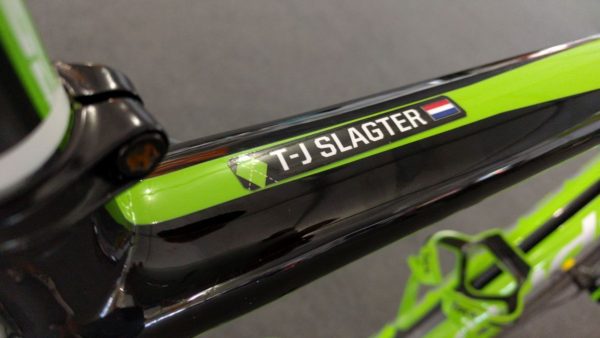 TJ Slagter is classified as a Puncheur / Climber and hails from the Netherlands. He began his professional career in 2011 with Rabobank, and signed with Garmin-Sharp in 2014. He remains with the team to this day, despite the underlying management company changing presenting sponsors.
TJ Slagter is classified as a Puncheur / Climber and hails from the Netherlands. He began his professional career in 2011 with Rabobank, and signed with Garmin-Sharp in 2014. He remains with the team to this day, despite the underlying management company changing presenting sponsors.
Cannondale call the new EVO the “best all round racing bike ever made thanks to its perfect balance of everything it takes to go fast”. In line with many other manufacturers, Cannondale route the rear brake and electronic Di2 derailleur cable into the head tube.
TJ rides the second smallest size Cannondale make for the SuperSix EVO. The size 48 measures 51cm center to center on the top tube, and 48.7cm for the seat tube. Cannondale design the SuperSix EVO frame, fork and components such as the crankset as a system – they claim this helps to save hundreds of grams over competing designs.
FSA (Full Speed Ahead) supply cockpit components to the team – handlebars, stem and seatposts.
TJ chooses an FSA SL-K compact drop carbon fiber handlebar in 40cm – carbon bars are a less than common choice in the pro peloton. Garmin supply the team’s computers and mounts.
Slammed FSA stem, but with a spacer on top, leaves a little wiggle room to raise the stem. Shimano’s Di2 Junction-A box is slung beneath the FSA OS99 stem. This stem is factory fitted with titanium bolts.
Cannondale’s own SISL BB30 crank is fitted to all of the team’s bikes and SRM supply the team’s power measurement technology. The big chainring is marked as a 53 / 46 matched set, just like Paddy Bevin’s training bike we featured earlier. And just like Paddy’s bike, the small chainring has 38 teeth.
All of the team’s race bikes feature Shimano Di2 9070 Di2 electronic rear derailleurs, but are fitted with the Ceramic Speed OSPW (Oversized Pulley Wheel System).
The 17-tooth aluminium pulley wheels reside in a specially designed polyamide and carbon cage.
Ceramic Speed claims the OSPW System optimizes the overall efficiency of one’s drivetrain due to the extremely low friction of the Ceramic Speed bearings and the unique design of their system.
Ceramic Speed states the OSPW System for Shimano can handle a 28 tooth cog on most bikes. Pictured above is an 11-28 Dura-Ace 11-speed cassette.
The team’s SuperSix EVO bikes rely on the braking power of the 9000 series Dura-Ace brake calipers.
Mavic supplies the team with their 40mm deep, Mavic Cosmic Ultimate carbon tubular wheelset. The tires on TJ’s bike were not branded, but other team bikes were shod with Mavic Yksion Pro Griplink tubular tires.
Quite the pile of Mavic wheels.
Cannondale specifies a 25.4mm seatpost for the 2017 SuperSix EVO – 25.4mm was a common size during the days of steel racing bikes, but Cannondale believes their 25.4mm SAVE seatpost delivers up to 36% more deflection at the saddle versus similar 27.2mm seatposts – good for comfort. We assume this trait applies to the 25.4mm FSA K-Force seatpost as well.
TJ’s saddle of choice is the Fizik Aliante.
Tacx supplies the team’s custom colored bottle cages.
Article and photos by Gravel Cyclist. Jayson O’Mahoney is the Gravel Cyclist: A website about the Gravel Cycling Experience.
